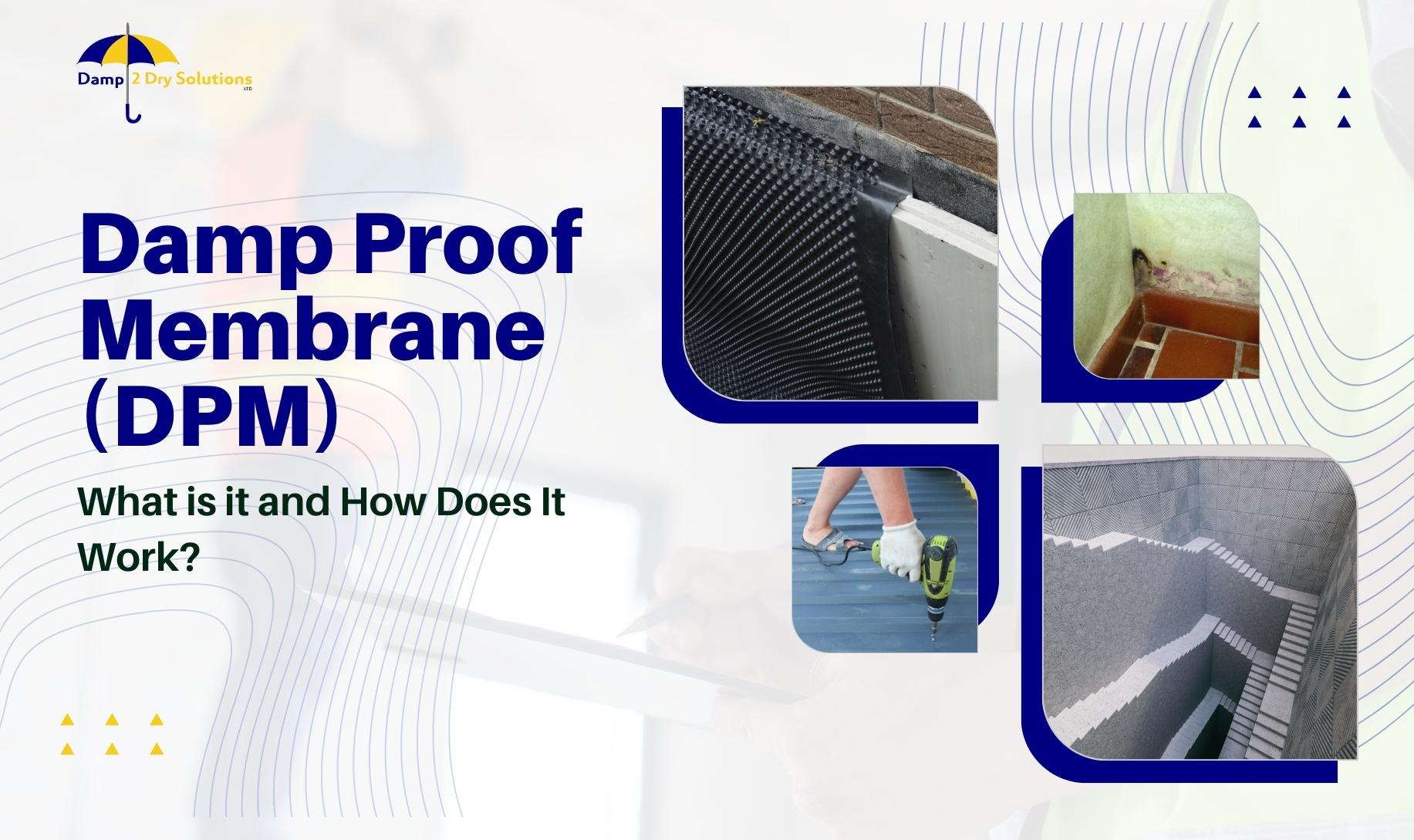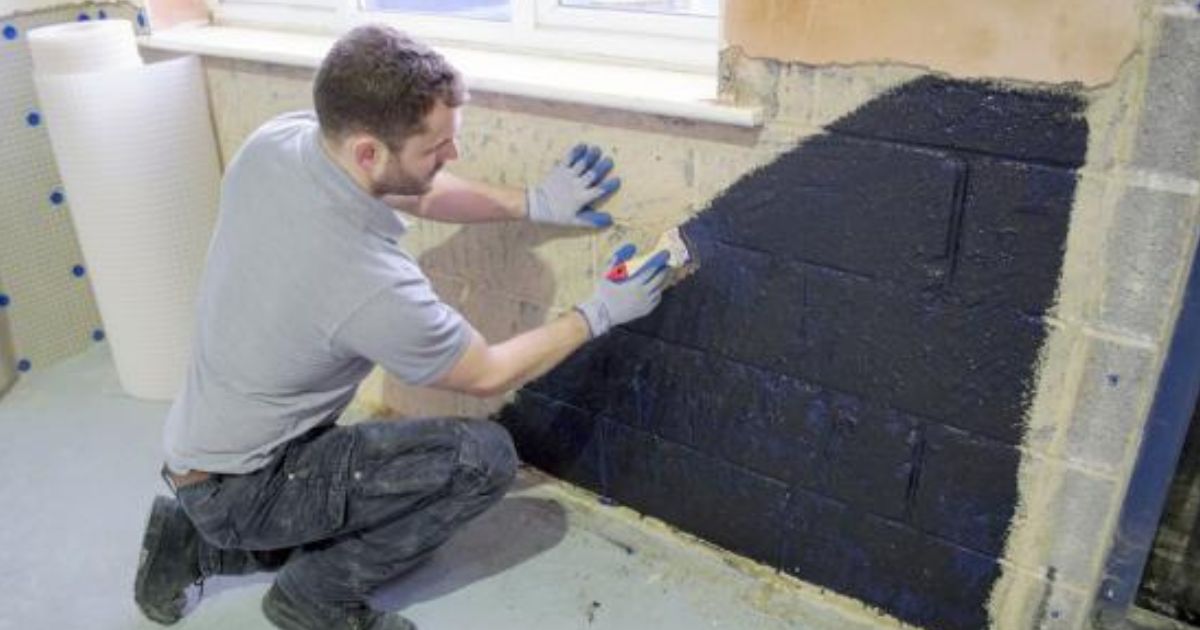Understanding the Relevance of Damp Proofing in Preventing Structural Damage
Wet proofing works as an important protection against wetness infiltration in buildings. This safety measure can stop significant architectural damages, yet several homeowner continue to be uninformed of its significance. Identifying the signs of wetness and comprehending the numerous remedies readily available can be critical. Disregarding wet proofing can lead to severe repercussions. What are the details threats and remedies that home proprietors should take into consideration?
What Is Damp Proofing and How Does It Function?
Wet proofing works as an important barrier against wetness breach in buildings. damp removal newcastle. This process entails using specific products and strategies to stop water from permeating wall surfaces, floorings, and other structural aspects. Generally, moist proofing can be attained with the setup of wet proof membranes, finishes, or using specialized sealants.These techniques work by producing a protective layer that hinders moisture activity, making sure that the indoor atmosphere remains healthy and completely dry. Moist proofing is especially essential in locations vulnerable to high humidity or groundwater, as it assists keep the honesty of the framework over time.Moreover, effective wet proofing adds to power effectiveness by avoiding warm loss connected with damp atmospheres. By resolving potential moisture issues prior to they intensify, damp proofing works as a positive step in protecting buildings from the damaging results of water damage, inevitably lengthening their lifespan and maintaining their worth
Common Indications of Wetness in a Building
Dampness issues within a building can manifest with several noticeable signs that indicate the visibility of moisture. One famous indication is the appearance of water spots on walls or ceilings, which commonly indicates wetness infiltration. Additionally, bubbling or peeling off paint can suggest that excess humidity is entraped beneath the surface, causing deterioration. One more usual sign is the presence of mold and mold, which prosper in wet conditions and can usually be recognized by their musty smell. Moreover, a rise in moisture degrees can cause condensation on windows and various other surface areas, highlighting wetness issues. Ultimately, warped or unequal flooring may signal underlying wetness that compromises architectural honesty. Acknowledging these indications early can aid mitigate prospective damages and keep a secure living setting. Regular evaluations and punctual activity are vital in dealing with wetness issues prior to they rise.
The Threats of Ignoring Damp Proofing
Overlooking moist proofing can lead to significant threats to a building's architectural integrity, as wetness accumulation might deteriorate wall surfaces and foundations. Furthermore, extended wetness develops a setting conducive to mold growth, positioning severe carcinogen to passengers. Attending to these threats is vital for making sure both security and longevity of the residential property.
Architectural Honesty Threats
They subject their residential or commercial properties to significant structural honesty threats when property owners ignore the significance of reliable damp proofing. Long term moisture infiltration can lead to the development of mold, which compromises foundational components and can endanger overall stability. Furthermore, excess wetness can deteriorate concrete and brickwork, resulting in fractures and architectural failures. Wood components are especially susceptible; they can rot and shed load-bearing capacity, posturing severe dangers to the structure's framework. Untreated wet conditions might bring in insects, such as termites, which further worsen structural degeneration. Ultimately, overlooking wet proofing steps can bring about pricey repairs and potential security dangers, underscoring the crucial function of aggressive wet monitoring in protecting the integrity of homes.
Health And Wellness Hazard Issues
Just how can a seemingly minor oversight bring about significant health threats? Ignoring moist proofing can create a setting conducive to mold and mildew growth, which postures significant wellness dangers. Mold and mildew spores can set off allergies, respiratory concerns, and various other health complications, particularly in susceptible populations such as kids, the senior, and individuals with pre-existing conditions. Furthermore, relentless dampness can attract parasites like rodents and insects, which lug conditions that even more compromise health. The existence of wetness also adds to a decrease in indoor air top quality, worsening bronchial asthma and various other breathing disorders. As a result, the failure to deal with wet issues not only threatens architectural integrity yet likewise threatens the well-being of occupants, highlighting the crucial requirement for reliable damp proofing actions.
Different Types of Damp Proofing Solutions
Although various variables can add to damp concerns in structures, picking the suitable wet proofing remedy is vital for maintaining architectural honesty. A number of choices are available, each tailored to specific conditions.One common solution is a damp-proof membrane (DPM), normally made from polyethylene or bitumen, which is installed in floors and walls to stop dampness ingress. Another choice is damp-proof courses (DPC), which are layers of water-proof material positioned within walls to block get more info climbing damp.Chemical damp proofing entails injecting waterproofing chemicals into wall surfaces to develop a barrier against moisture. Additionally, outside treatments such as tanking, which involves using a waterproof layer to the beyond foundations, can be reliable in stopping water penetration.Each service has its advantages and is selected based upon the building's details concerns, environmental conditions, and long-term maintenance factors to consider, ensuring perfect protection against damp-related damage.

The Cost of Damp Damages vs. Avoidance
Comprehending the monetary ramifications of wet damage contrasted to avoidance highlights the value of proactive procedures. The expenses associated with damp damage can be considerable, consisting of repairs to architectural elements, mold removal, and potential health-related expenses. Home owners might encounter substantial economic pressure if considerable damages occurs, bring about boosted insurance policy costs and lost building value.In comparison, investing in damp proofing services is commonly even more affordable. Preliminary expenditures for prevention approaches, such as installing damp-proof membrane layers or improving water drainage systems, are typically outweighed by the long-term financial savings from staying clear of pricey fixings. Furthermore, avoiding damp issues can enhance a home's overall worth and charm, making it a smart investment. When evaluating the price of damp damage versus prevention, it comes to be clear that taking aggressive actions can protect economic rate of interests and preserve the honesty of the residential or commercial property over time.
Picking the Right Damp Proofing Method for Your Building
Which damp proofing method is most suitable for a specific residential or commercial property often depends upon various factors, consisting of the building's age, existing dampness issues, and neighborhood ecological problems. For older structures, standard methods such as asphalt membrane layers or cementitious layers may be more reliable, as they can provide a durable obstacle against climbing moist. On the other hand, more recent structures may benefit from contemporary remedies like injected damp-proof courses, which are less invasive and can be customized to particular wetness challenges.Additionally, buildings in areas with high water tables or hefty rains might call for advanced techniques, such as dental caries wall drainage systems or external waterproofing. Home owners must additionally take into consideration the specific products utilized in their building's building, as some techniques might not be compatible. Ultimately, a complete evaluation by an expert can direct residential property proprietors in picking the most effective damp proofing approach tailored to their unique scenarios.
Maintaining Your Damp Proofing System Over Time
Normal upkeep of a moist proofing system is essential for ensuring its lasting efficiency and securing a residential or commercial property from moisture-related damages. Homeowner should carry out routine inspections to determine any kind of signs of wear or compromise in the damp proofing layer. This consists of monitoring for fractures, peeling paint, or mold development, which may indicate moisture intrusion.Additionally, it is recommended to clean seamless gutters and downspouts consistently to prevent water build-up around the structure. Reapplying sealers or membranes may be required if deterioration is observed.Engaging professional services for routine assessments can even more boost the resilience of the system. These professionals can supply insights into possible susceptabilities and suggest timely repair work.
Regularly Asked Inquiries
How Much Time Does Damp Proofing Treatment Last Prior To Requiring Repairs?
The longevity of wet proofing treatment generally varies from 10 to 30 years, depending on variables such as the technique made use of, ecological problems, and maintenance techniques. Regular examinations can help figure out when fixings might be necessary.
Is Do It Yourself Damp Proofing Effective Contrasted to Expert Providers?
The effectiveness of DIY damp proofing varies substantially. mould treatment newcastle. While some people may accomplish adequate outcomes, specialist services commonly ensure complete services, leveraging expertise and quality materials to avoid future issues extra accurately than many do it yourself efforts
Can Damp Proofing Improve Indoor Air Quality?
The question of whether wet proofing can improve indoor air high quality develops often. Efficient damp proofing lowers dampness levels, consequently reducing mold and mildew growth and irritants, inevitably contributing to a healthier indoor environment for residents.
Exist Certain Rules for Damp Proofing in Various Locations?
Regulations for wet proofing differ by area, commonly influenced by regional building ordinance and environmental conditions. Conformity assurances efficient moisture control, advertising and guarding frameworks safety and security, which highlights the need for adherence to these certain regulations.

What Are the Long-Term Benefits of Appropriate Damp Proofing?
The lasting advantages of proper wet proofing include improved architectural stability, lowered maintenance prices, improved interior air quality, and boosted home value. These benefits add to a healthier living setting and long term life-span of buildings. Generally, wet proofing can be accomplished through the installment of wet proof membrane layers, layers, or the usage of specialized sealants.These methods work by creating a protective layer that prevents moisture motion, making certain that the indoor environment continues to be healthy and dry. Wet proofing is especially important in areas prone to high humidity or groundwater, as it helps preserve the stability of the structure over time.Moreover, effective damp proofing adds to energy effectiveness by protecting against heat loss connected with damp atmospheres. Ignoring damp proofing can lead to considerable threats to a building's architectural stability, as moisture accumulation might compromise wall surfaces and structures (mould removal newcastle). Numerous elements can add to damp issues in buildings, picking the ideal damp proofing remedy is essential for protecting architectural integrity. Which moist proofing method is most appropriate for a specific home often depends on different factors, including the structure's age, existing moisture issues, and neighborhood environmental conditions